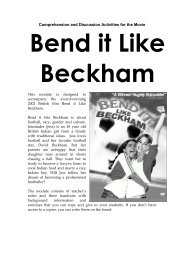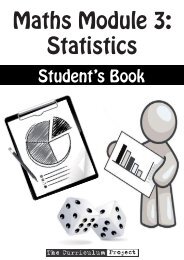General English Pre-Intermediate Modules 1-4 Teacher's Guide (2.1 ...
General English Pre-Intermediate Modules 1-4 Teacher's Guide (2.1 ...
General English Pre-Intermediate Modules 1-4 Teacher's Guide (2.1 ...
You also want an ePaper? Increase the reach of your titles
YUMPU automatically turns print PDFs into web optimized ePapers that Google loves.
C. Play audio 3.5. Students listen, and identify which ingredients are in which dish.<br />
Answers:<br />
Pizza: flour, egg, tomatoes, carrots, onion, garlic, eggplant, cheese.<br />
Pasta: noodles, garlic, spices, onion, oil, meat, tomatoes, mushrooms, pepper, cabbage.<br />
D. Students answer the questions.<br />
Answers:<br />
1. Both pizza and pasta, if you don’t include any meat – neither has to include meat. In<br />
this example the pizza is vegetarian, but the pasta includes meat.<br />
2. Pizza. Some types of pasta can take this long as well, but usually pasta cooks in<br />
5-20 minutes.<br />
3. Pasta. You can eat pizza with a knife and fork too, but most people just use<br />
their hands.<br />
4. Pizza.<br />
4.3 Recipes<br />
A. Students look at the picture. They try to guess what ingredients are in the hamburger.<br />
Brainstorm a list of possible ingredients.<br />
There’s no exact answer, as some hamburgers have different sauces, but here’s list of<br />
common ingredients:<br />
Possible answers:<br />
bread rolls (big, round pieces of bread), meat, tomato, lettuce, onion, egg, garlic, flour, oil.<br />
B. <strong>Pre</strong>-teach toast (v) (to cook bread again, until it goes brown). Students put the recipe in order.<br />
Answer:<br />
e. Chop the meat, onions, and garlic.<br />
d. Mix them together with an egg, some flour and a little oil.<br />
c. Make them into small, flat cakes. Cook these in a little oil.<br />
a. Cut the bread rolls in half, and toast them a little.<br />
f. Put the meat cakes in between the two halves of the bread rolls.<br />
b. Add some tomato, lettuce and onion. It’s ready to eat!<br />
C. Students match the verbs with the noun phrases.<br />
Answers:<br />
mix – the oil and the onions, three eggs and some sugar, the flour with the chilli<br />
and potatoes<br />
chop – the onions, the fish<br />
cook – the oil and the onions, the fish, the flour with the chilli and potatoes, bean curry,<br />
small round cakes<br />
add – the oil and the onions, the fish, three eggs and some sugar, the lemon juice,<br />
some salt, the water in the pot, the flour with the chilli and potatoes, the garlic<br />
to the sauce<br />
put – the water in the pot, the flour with the chilli and potatoes<br />
make – small, round cakes, bean curry<br />
boil – the water in the pot<br />
D. Students make their own recipes. If this is very difficult, they should do it in pairs. First, they think of<br />
a dish that they know how to make. They list all the ingredients, think of the cooking process, and<br />
instructions for how to make it. They can use the verbs from C, and ask you for more vocabulary if<br />
necessary. They write this down in preparation for the pair dictation next.<br />
E. Students do a pair dictation. Partner A explains their recipe to Partner B, who writes it down.<br />
Encourage students to ask for clarification if they don’t understand something their partner is saying.<br />
After they have written the recipe, they should write it out properly, and check for mistakes.<br />
They then show it to their partners to see if it is correct. Then partners A and B swap roles.<br />
42 Module 3


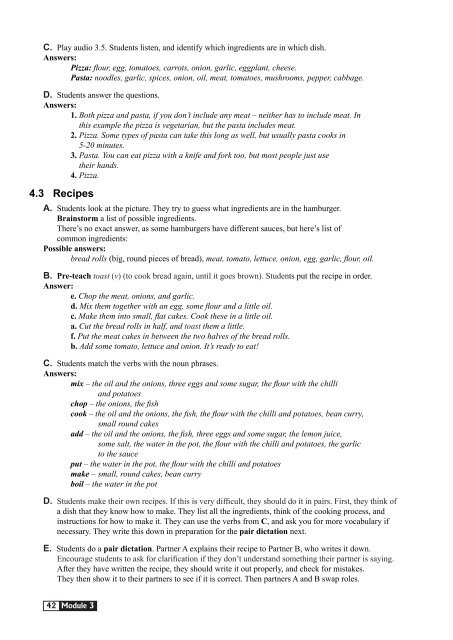
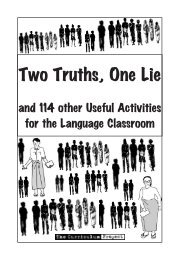
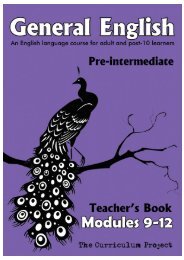
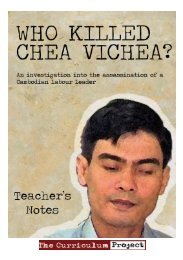

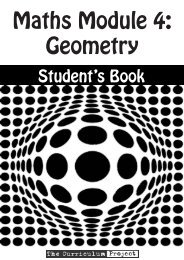

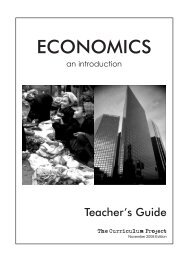
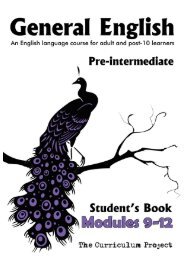

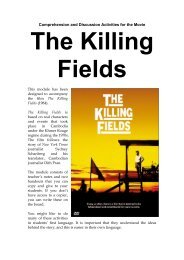
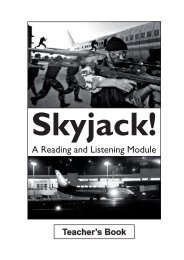
![[Eng] Nov 2012 DRAFT - The Curriculum Project](https://img.yumpu.com/45590859/1/184x260/eng-nov-2012-draft-the-curriculum-project.jpg?quality=85)
